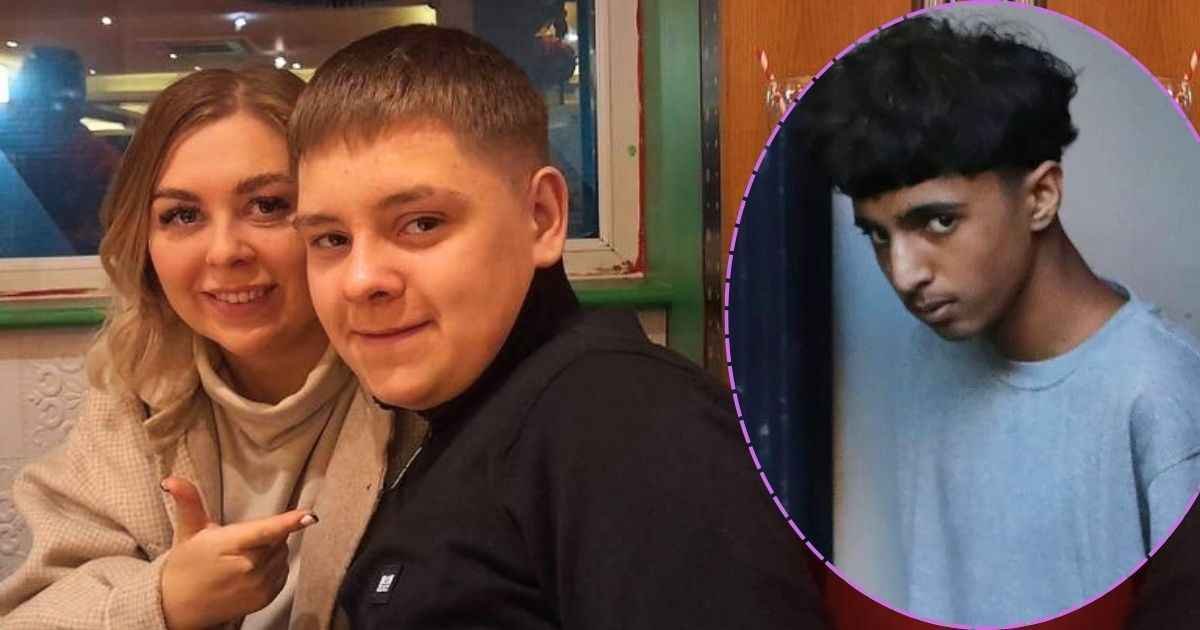On a cold February day, Harvey Willgoose went to school like any other child. He was 15 years old and full of life. But that day turned tragic. At All Saints Catholic High School in Sheffield, Harvey was stabbed by another student. The schoolyard, once full of laughter, became a place of fear. Students ran and hid while teachers tried to help. Harvey’s life ended too soon.
Harvey Willgoose was kind, fun, and caring. His family and friends were shocked. The whole school and community felt sadness. His story shows a bigger problem today. Knife crime among teenagers is growing. Teen violence and school safety are serious concerns. Young people need guidance, and adults must act to protect them.
In this article, we will explore the lessons from Harvey Willgoose’s death. We will share ways parents, teachers, and teens can prevent danger. Learning from his story can help keep other children safe and avoid future tragedies.
The Story Behind Harvey Willgoose
Harvey Willgoose was 15 and loved school. He went to All Saints Catholic High School in Sheffield. Harvey was known as kind, funny, and full of energy. He liked spending time with friends and learning new things. His teachers said he was polite and helpful.
On February 3, Harvey’s life changed forever. Another student stabbed him in the schoolyard. Students ran and hid while teachers tried to help. Emergency services arrived, but Harvey could not be saved. His death shocked the school and the whole community. Families, friends, and classmates felt deep sadness.
Harvey’s story shows a bigger problem. Knife crime in UK schools is rising. Many teenagers carry weapons, and school violence is a real danger. Students, parents, and teachers must act to protect children. Detectives said that some students knew about knives but did not speak up. Harvey’s case proves how important it is to notice warning signs and prevent danger early.
His family hopes that sharing Harvey Willgoose’s story will make schools safer. They want children to feel protected and happy. Learning from his story can help prevent future tragedies and remind everyone that young lives matter.
Understanding the Root Causes of Teen Knife Crime
Knife crime among teenagers happens for many reasons. Bullying is one of the main causes. When kids feel scared or teased, they may carry a knife to feel safe. Social media conflicts also make problems worse. Arguments online can turn into fights at school. Friendship disputes can make small problems grow into big dangers.
Mental health struggles are another reason. Some teenagers feel lonely, stressed, or angry. Without support, these feelings can lead to bad decisions. Many students do not know how to ask for help. Peer pressure is also a factor. Some teens think carrying a knife makes them popular or gives them respect. This “status symbol” idea is very dangerous.
Small conflicts can escalate quickly if no one steps in. A short argument between friends can lead to serious violence. Experts say UK youth knife crime has increased in recent years. Schools in Sheffield and other cities report more incidents. Police and teachers stress the need for early action and guidance for teens.
Parents, teachers, and friends can help prevent knife crime. They should watch for changes in behavior, talk about feelings, and provide safe ways to solve problems. Education about consequences is important. Teens need to know that carrying a knife can hurt themselves and others. Learning from cases like Harvey Willgoose can save lives and improve school safety.
Warning Signs Parents and Teachers Should Watch
Parents and teachers can notice early signs before a problem becomes serious. Kids may show behavior changes like sudden anger, aggression, or withdrawal from friends. Some teens may become fascinated with weapons or talk about knives and self-protection.
Sometimes, children say things about feeling unsafe or threatened. These conversations are warnings. Adults should listen carefully without judging. Online activity can also show risks. Teens may post violent content or talk about fights on social media. This can be a sign they are troubled or thinking about carrying a weapon.
It is important to act early. Safe ways to help include talking calmly, asking questions, and offering support. Schools can provide guidance and counseling to students who show these warning signs. Detectives and safety experts say noticing risks early can save lives.
Parents and teachers must work together to protect children. Youth protection, student safety, and school guidance are key. Learning from Harvey Willgoose’s story shows that spotting danger signs early can prevent tragedies. Every child deserves a safe environment to learn and grow.
Lessons for Schools: How to Make Campuses Safer
Schools can take steps to make campuses safer after incidents like Harvey Willgoose’s death. Policies are the first step. Schools should have zero-tolerance rules for weapons. Anonymous reporting systems help students share concerns without fear.
Staff training is also important. Teachers and school staff should learn how to recognize threats and support students. Knowing warning signs early can prevent conflicts from escalating. Schools can also work with police and community programs. These partnerships provide extra safety and resources for students.
Practical safety measures are useful too. CCTV cameras can help monitor areas where conflicts might happen. Lockdown drills prepare students and staff for emergencies. Mental health resources help students cope with stress, bullying, or peer pressure.
Creating a safer school environment is not only about rules. It is about building trust. Students should feel comfortable reporting problems. Staff should respond quickly and fairly. Schools in Sheffield and across the UK use rules, trained teachers, and community help to stop knife crime. These actions make students feel safer at school.
Learning from Harvey Willgoose’s story teaches schools how important it is to protect children. Every step matters in preventing violence and keeping school environments safe.
Teaching Teens to Make Safe Choices
Teens can make safer choices when they get guidance and support. Adults should encourage open communication. Let teens talk about conflicts, fears, and peer pressure. Listening without judging helps build trust.
Education is also key. Teens should understand the consequences of carrying weapons. Carrying a knife can hurt themselves or others. Stories from real cases, like Harvey Willgoose’s, help teens see the dangers without being sensational. Small examples or analogies can make lessons clear.
Peer support and mentorship programs work well too. Teens who have guidance from older students or mentors make safer decisions. Students can talk in groups about anger, bullying, or social media problems. These talks can stop small problems from becoming big ones.
Parents, teachers, and friends all play a role. They can help teens resolve conflicts, manage stress, and feel safe at school. Teen violence, prevention tips, youth guidance, and conflict resolution are all important. Learning from Harvey Willgoose’s story reminds everyone that choices matter. Teens who understand risks can stay safe, protect friends, and create a peaceful school environment.
Support Networks for Families Affected by Knife Crime
Families who face knife crime need support to feel safe and heal. Parents, siblings, and children can feel sad, scared, or angry. Counseling and support groups give them a safe place to talk and share feelings. Talking to people who understand helps families feel less alone.
Families can also work with schools and police to keep children safe. Schools can guide parents on student safety. Police can advise on how to prevent problems. Joining programs about safety and violence prevention helps families feel in control.
Long-term coping is important too. Families can learn ways to handle stress, sadness, and fear. Doing simple things every day can help, like following routines and talking about feelings. Teens should also ask for help from adults they trust.
Sharing stories like Harvey Willgoose’s helps families see that recovery is possible. Knowing they are not alone and taking small safety steps gives hope. Families can heal while keeping children safe.
FAQs About Harvey Willgoose and Knife Crime Prevention
Q1: What happened to Harvey Willgoose?
Harvey Willgoose was a 15-year-old student in Sheffield. He was stabbed at school and sadly died. His story helped raise awareness about knife crime and teen safety.
Q2: How can schools prevent knife-related incidents?
Schools can have strict rules against weapons. Staff should be trained to notice danger. CCTV cameras, lockdown drills, and mental health support keep students safe. Schools can also work with police and community programs for extra protection.
Q3: What signs show a teen might be at risk?
Parents and teachers should watch for behavior changes, like sudden anger, withdrawal, or interest in knives. Posting violent content on social media can also be a warning. Early action and guidance can prevent harm. Youth protection starts with noticing these small signs.
Q4: How can parents talk to children about knife crime safely?
Parents should listen calmly. Let children share their fears, conflicts, and peer pressure experiences. Give advice and support without judging. Safe and open conversations help teens make better choices.
Key Takeaway
It is very important to watch for warning signs and act early. Adults and schools should guide children. Harvey Willgoose’s story helps families and schools learn how to keep students safe and stop accidents from happening.
Conclusion
Harvey Willgoose’s story teaches us that keeping children safe is everyone’s job. Adults and teens should notice changes in behavior, talk about problems, and take action quickly. Schools can be safer with trained staff, clear rules, and help from police and community programs.
Families affected by knife crime can get support from counselors and groups. Teens should learn why carrying weapons is dangerous and get advice from mentors. They can also find safe ways to solve problems.
By paying attention, helping each other, and acting early, communities can stop bad events from happening. Every child deserves a safe place to learn, play, and grow.
Read More Articles:
Nicolas Sarkozy: Inside the First French President to Go to Prison in Modern Times
Top Benefits of Using a Professional 3D Rendering Service

I’m Emma Rose, the founder of tryhardguides.co.uk, and a content creator with a passion for writing across multiple niches—including health, lifestyle, tech, career, and personal development. I love turning complex ideas into relatable, easy-to-digest content that helps people learn, grow, and stay inspired. Whether I’m sharing practical tips or diving into thought-provoking topics, my goal is always to add real value and connect with readers on a deeper level.

